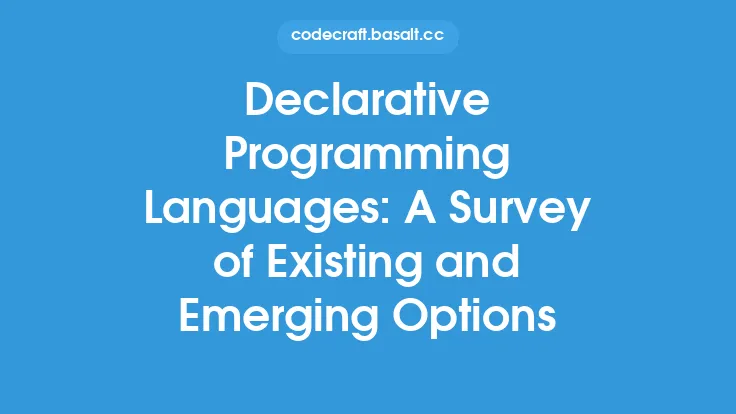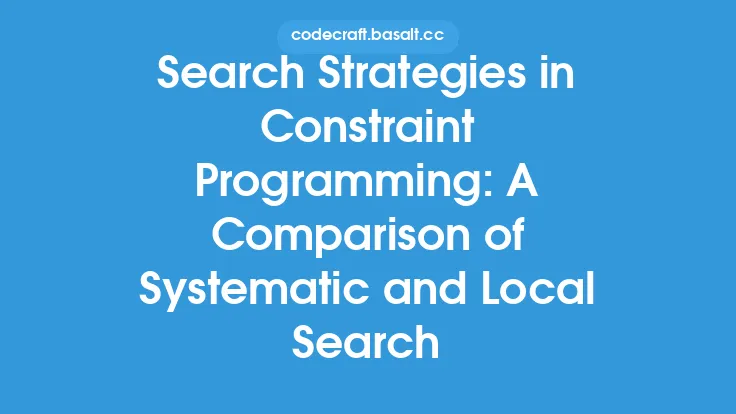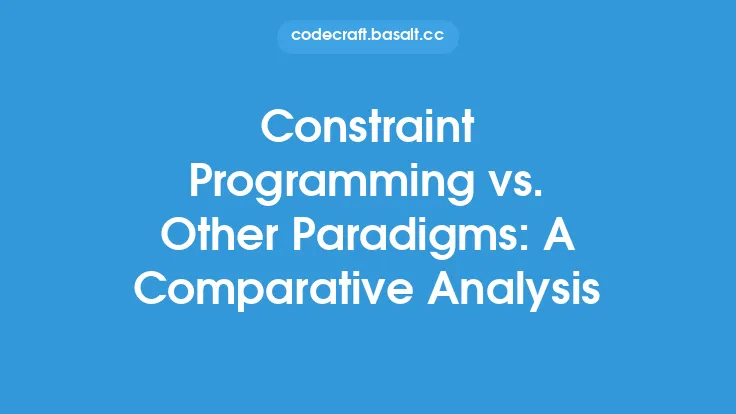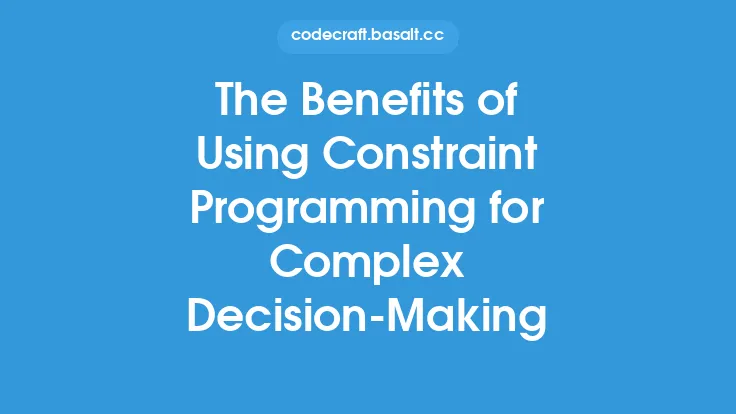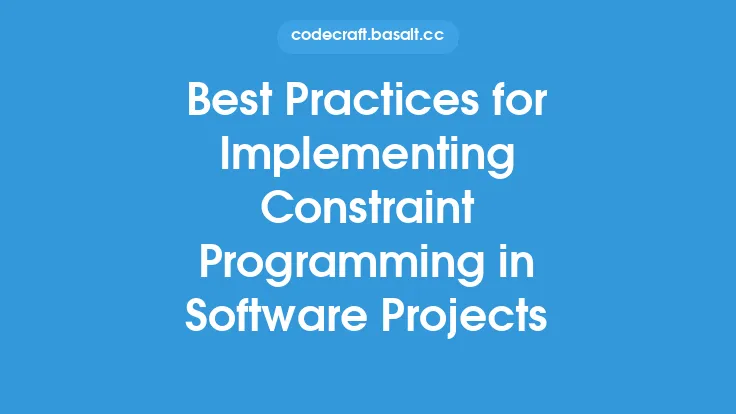Constraint programming is a powerful paradigm for modeling and solving complex problems, and it has been widely adopted in various fields, including artificial intelligence, operations research, and computer science. At the heart of constraint programming are the languages and tools that enable developers to model and solve problems efficiently. In this article, we will survey the most popular constraint programming languages and tools, highlighting their features, strengths, and weaknesses.
Introduction to Constraint Programming Languages
Constraint programming languages are designed to support the modeling and solving of constraint satisfaction problems (CSPs) and constraint optimization problems (COPs). These languages provide a high-level abstraction for defining variables, domains, and constraints, making it easier to model complex problems. Some of the key features of constraint programming languages include support for constraint specification, constraint propagation, and search strategies. Popular constraint programming languages include OPL, MiniZinc, and Essence.
Overview of Constraint Programming Tools
Constraint programming tools are software systems that provide a platform for modeling, solving, and analyzing constraint problems. These tools often include a constraint programming language, a solver, and a set of libraries and APIs for integrating with other systems. Some of the most popular constraint programming tools include CPLEX, Gurobi, and Google OR-Tools. These tools provide a wide range of features, including support for linear and nonlinear constraints, integer and continuous variables, and various search strategies.
OPL: A High-Level Constraint Programming Language
OPL (Optimization Programming Language) is a high-level constraint programming language developed by IBM. OPL is designed to support the modeling and solving of complex optimization problems, including linear, nonlinear, and integer programming problems. OPL provides a simple and intuitive syntax for defining variables, constraints, and objectives, making it easier to model complex problems. OPL is widely used in various fields, including logistics, finance, and energy management.
MiniZinc: A Medium-Level Constraint Programming Language
MiniZinc is a medium-level constraint programming language that provides a balance between expressiveness and efficiency. MiniZinc is designed to support the modeling and solving of constraint satisfaction problems (CSPs) and constraint optimization problems (COPs). MiniZinc provides a simple and flexible syntax for defining variables, constraints, and objectives, making it easier to model complex problems. MiniZinc is widely used in various fields, including scheduling, planning, and resource allocation.
Essence: A High-Level Constraint Programming Language
Essence is a high-level constraint programming language that provides a simple and intuitive syntax for defining variables, constraints, and objectives. Essence is designed to support the modeling and solving of complex constraint problems, including CSPs and COPs. Essence provides a wide range of features, including support for linear and nonlinear constraints, integer and continuous variables, and various search strategies. Essence is widely used in various fields, including artificial intelligence, operations research, and computer science.
CPLEX: A Commercial Constraint Programming Tool
CPLEX is a commercial constraint programming tool developed by IBM. CPLEX provides a wide range of features, including support for linear and nonlinear constraints, integer and continuous variables, and various search strategies. CPLEX is designed to support the modeling and solving of complex optimization problems, including linear, nonlinear, and integer programming problems. CPLEX is widely used in various fields, including logistics, finance, and energy management.
Gurobi: A Commercial Constraint Programming Tool
Gurobi is a commercial constraint programming tool that provides a wide range of features, including support for linear and nonlinear constraints, integer and continuous variables, and various search strategies. Gurobi is designed to support the modeling and solving of complex optimization problems, including linear, nonlinear, and integer programming problems. Gurobi is widely used in various fields, including logistics, finance, and energy management.
Google OR-Tools: An Open-Source Constraint Programming Tool
Google OR-Tools is an open-source constraint programming tool that provides a wide range of features, including support for linear and nonlinear constraints, integer and continuous variables, and various search strategies. Google OR-Tools is designed to support the modeling and solving of complex optimization problems, including linear, nonlinear, and integer programming problems. Google OR-Tools is widely used in various fields, including logistics, finance, and energy management.
Comparison of Constraint Programming Languages and Tools
The choice of constraint programming language or tool depends on the specific needs of the problem being solved. OPL, MiniZinc, and Essence are popular constraint programming languages that provide a high-level abstraction for defining variables, constraints, and objectives. CPLEX, Gurobi, and Google OR-Tools are popular constraint programming tools that provide a wide range of features, including support for linear and nonlinear constraints, integer and continuous variables, and various search strategies. When choosing a constraint programming language or tool, developers should consider factors such as ease of use, performance, and scalability.
Conclusion
Constraint programming languages and tools are essential for modeling and solving complex problems in various fields, including artificial intelligence, operations research, and computer science. In this article, we surveyed the most popular constraint programming languages and tools, highlighting their features, strengths, and weaknesses. By understanding the capabilities and limitations of these languages and tools, developers can make informed decisions when choosing a constraint programming language or tool for their specific needs. Whether you are a seasoned developer or just starting out with constraint programming, this survey provides a comprehensive overview of the current state of the field and the tools available for solving complex problems.
